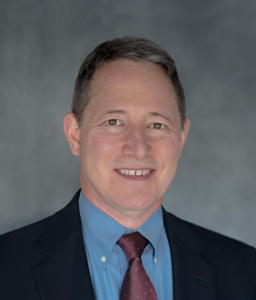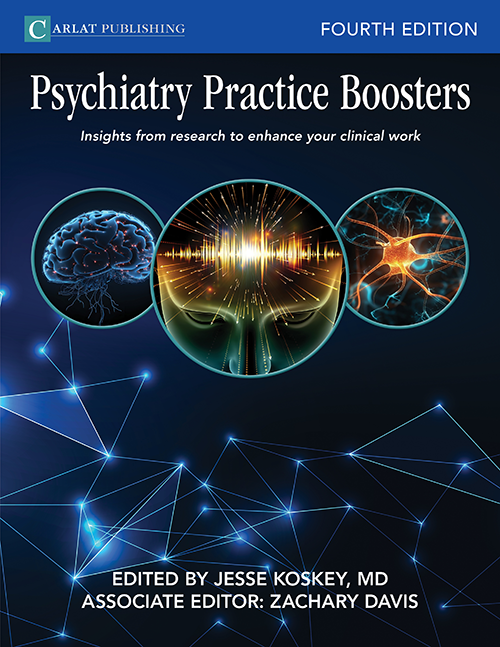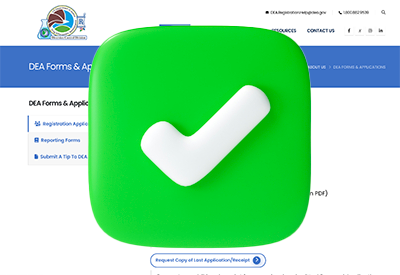Home » Lithium: Practical Considerations for Children With Suicidal Thinking
Lithium: Practical Considerations for Children With Suicidal Thinking

January 1, 2018
From The Carlat Child Psychiatry Report
Eve Dreyfus, MD
Pediatric psychiatrist for Beacon Medical Group Behavioral Health, South Bend, IN
Dr. Dreyfus has disclosed that they have no relevant financial or other interests in any commercial companies pertaining to this educational activity.
Josh Feder, MD
Editor-in-chief of The Carlat Child Psychiatry Report
Dr. Feder has disclosed that they have no relevant financial or other interests in any commercial companies pertaining to this educational activity.
Billy, age 10, has periods of intense aggression alternating with moments of wanting to be dead, severe mood swings, poor sleep, and pervasive irritability. He has a family history of bipolar disorder. Other family members have responded well to lithium. Since they want to act assertively to help him, Billy’s family is open to medication trials and any other measures. You obtain baseline laboratory studies quickly and begin treatment within days, including individual and family therapy, and a starting dose of lithium. Billy responds well; his follow-up lithium levels are stable, as are his renal and thyroid function tests. It appears that the plan has averted potential disaster.
While we occasionally see situations such as the above (a supportive family, a compliant patient, and a positive response to a medication trial), the more common scenario resembles the following:
Billy has been told that his attitude and behavior are bad, and he is often in trouble at school and at home for misbehaving, including failing to go to sleep, overreacting to peers and adults, and defiance of rules. Billy has been spoken to many times, suspended, and taken to several counselors before coming to see you. He has been treated with stimulants and antidepressants (SSRIs) to no avail, and perhaps even to his detriment. His parents are exhausted, frustrated, and worried, but spent. When you suggest laboratory studies, they say getting blood from Billy will be impossible, and he will not stay still for an EKG. Considering their prior experience with medications, Billy’s parents are against further medication trials, particularly with medications that might have even more side effects than the “safe” ones they’ve already tried. When you mention that lithium might be helpful to consider, Billy’s parents look at you aghast for suggesting such a powerful drug—they claim lithium is only used for people who are truly insane, and they openly wonder what you must think of their son.
These challenging situations demand that we stay calm and remain receptive to the frustrations of the family, while at the same time addressing the child’s difficulties, chief among them the risk of suicide. This article will cover the judicious consideration and use of lithium in children with suicidal thinking and behavior as part of their overall mental health picture.
Effectiveness of lithium in children
Lithium is FDA approved for the treatment of bipolar disorder in children and adults. It is indicated both for acute mania and maintenance treatment. Studies on lithium’s helpfulness for suicidality in adults date back to 1972. Multiple studies, mostly retrospective and some prospective, report 15%–25% reductions in suicide rates for patients taking lithium (Tondo L and Baldessarini RJ, Epidemiol Psychiat Soc 2009;18(3):179–183). Conversely, there are reports of as much as a 24-fold increase in suicide rates when lithium is discontinued (Bocchetta A et al, J Clin Psychopharmacol 1998;18(5):384–389).
As lithium has been in use for so long, the evidence showing its effectiveness for mania in children is robust. The largest double-blind placebo-controlled study to date, the Collaborative Lithium Trials, looked at acute and maintenance treatment and found lithium to be both effective and well tolerated in patients with bipolar disorder ages 7–17 (Findling RL et al, Pediatrics 2015;136(5):885–894). There is little data, however, on the reduction of suicide attempts or completed suicides in children and adolescents. Even so, when symptoms include suicidal ideation or behavior, the general consensus of expert panels is to consider lithium for children and adolescents (World Health Organization 2012. See http://bit.ly/2jv8wHg).
Prescribing lithium
For bipolar disorder, lithium is typically used when other mood stabilizers—such as valproate, carbamazepine, and lamotrigine—have not been helpful, and after failed neuroleptic trials with medications such as risperidone and aripiprazole. Lithium is also employed in depressive disorders after adequate trials of two or three antidepressants.
Before starting lithium, consider reducing or eliminating medications that might aggravate the condition, such as antidepressants, if there is mood instability; stimulants, if there is sleep disturbance; and benzodiazepines, if there is withdrawal agitation. Once you’ve made these adjustments, start lithium using the gradual approach described here.
Before starting lithium, you should order baseline studies, including a complete blood count with differential; a comprehensive metabolic profile, including creatinine and blood urea nitrogen; thyroid-stimulating hormone and thyroxine levels; and an EKG. After completing the baseline studies, consider the following:
Discussing lithium with parents
When a clinician mentions the possibility of lithium, parents often become very concerned, and it’s important that we listen to them. If we respond to the high level of complexity and danger by moving too quickly, we lose the opportunity to gain parental trust. Then, they may have a hard time listening closely enough as we work with them to consider possible treatment options.
Before trying lithium, we may need to work with the child and family over a period. This may feel like lost time and may even result in more symptoms, escalation, and a need for more intensive levels of care. But our steady persistence is necessary to help families work with us on how things are going and what we might try next. That’s why you should consider the following while talking to patients and their parents or guardians:
When children cannot cooperate in blood tests and EKGs, as in Billy’s scenario, this may preclude the use of lithium and other medications, such as valproate and carbamazepine. Strategies for obtaining blood tests, however, can include special labs, perhaps at a children’s hospital (where staff have experience in calming children); through mobile lab services that can come to the home (if a medical setting is problematic and if phlebotomy in the home is not unduly intrusive); and through the use of mild sedation.
CCPR Verdict: Lithium certainly has its drawbacks, but given its effectiveness for mood disorders and suicidality, consider using it more frequently in your patients.
Child PsychiatryWhile we occasionally see situations such as the above (a supportive family, a compliant patient, and a positive response to a medication trial), the more common scenario resembles the following:
Billy has been told that his attitude and behavior are bad, and he is often in trouble at school and at home for misbehaving, including failing to go to sleep, overreacting to peers and adults, and defiance of rules. Billy has been spoken to many times, suspended, and taken to several counselors before coming to see you. He has been treated with stimulants and antidepressants (SSRIs) to no avail, and perhaps even to his detriment. His parents are exhausted, frustrated, and worried, but spent. When you suggest laboratory studies, they say getting blood from Billy will be impossible, and he will not stay still for an EKG. Considering their prior experience with medications, Billy’s parents are against further medication trials, particularly with medications that might have even more side effects than the “safe” ones they’ve already tried. When you mention that lithium might be helpful to consider, Billy’s parents look at you aghast for suggesting such a powerful drug—they claim lithium is only used for people who are truly insane, and they openly wonder what you must think of their son.
These challenging situations demand that we stay calm and remain receptive to the frustrations of the family, while at the same time addressing the child’s difficulties, chief among them the risk of suicide. This article will cover the judicious consideration and use of lithium in children with suicidal thinking and behavior as part of their overall mental health picture.
Effectiveness of lithium in children
Lithium is FDA approved for the treatment of bipolar disorder in children and adults. It is indicated both for acute mania and maintenance treatment. Studies on lithium’s helpfulness for suicidality in adults date back to 1972. Multiple studies, mostly retrospective and some prospective, report 15%–25% reductions in suicide rates for patients taking lithium (Tondo L and Baldessarini RJ, Epidemiol Psychiat Soc 2009;18(3):179–183). Conversely, there are reports of as much as a 24-fold increase in suicide rates when lithium is discontinued (Bocchetta A et al, J Clin Psychopharmacol 1998;18(5):384–389).
As lithium has been in use for so long, the evidence showing its effectiveness for mania in children is robust. The largest double-blind placebo-controlled study to date, the Collaborative Lithium Trials, looked at acute and maintenance treatment and found lithium to be both effective and well tolerated in patients with bipolar disorder ages 7–17 (Findling RL et al, Pediatrics 2015;136(5):885–894). There is little data, however, on the reduction of suicide attempts or completed suicides in children and adolescents. Even so, when symptoms include suicidal ideation or behavior, the general consensus of expert panels is to consider lithium for children and adolescents (World Health Organization 2012. See http://bit.ly/2jv8wHg).
Prescribing lithium
For bipolar disorder, lithium is typically used when other mood stabilizers—such as valproate, carbamazepine, and lamotrigine—have not been helpful, and after failed neuroleptic trials with medications such as risperidone and aripiprazole. Lithium is also employed in depressive disorders after adequate trials of two or three antidepressants.
Before starting lithium, consider reducing or eliminating medications that might aggravate the condition, such as antidepressants, if there is mood instability; stimulants, if there is sleep disturbance; and benzodiazepines, if there is withdrawal agitation. Once you’ve made these adjustments, start lithium using the gradual approach described here.
Before starting lithium, you should order baseline studies, including a complete blood count with differential; a comprehensive metabolic profile, including creatinine and blood urea nitrogen; thyroid-stimulating hormone and thyroxine levels; and an EKG. After completing the baseline studies, consider the following:
- In young children, a reasonable starting dose might be 150 mg at night, followed by a trough level after about 5 days, taken 8–12 hours after the dose. The target blood level range should be 0.8–1.2 mEq/L. Dosage increases of 150 mg can be done week by week with serial trough blood tests to check the level.
- In an effort to get more even 24-hour coverage (the half-life of lithium is 18–36 hours, with an average of 24 hours), dosing is typically increased by adding a morning dose, then an evening dose, and so forth.
- So that the child’s behavior and symptoms stabilize at a lower level, it is always wiser to use lower doses when possible. There is then no need to increase the dose to achieve the 0.8–1.2 mEq/L target range.
- For children 13 and older, a starting dosage of 300 mg and dosage increments of 300 mg are more efficient, with the same target trough level.
- If possible, all patients should be formally assessed and monitored at least every six months for abnormal involuntary movements using the Abnormal Involuntary Movement Scale (AIMS). Some children cannot cooperate with this test; if so, clinical observation and history from collateral sources (parents, teachers, etc) must suffice.
Discussing lithium with parents
When a clinician mentions the possibility of lithium, parents often become very concerned, and it’s important that we listen to them. If we respond to the high level of complexity and danger by moving too quickly, we lose the opportunity to gain parental trust. Then, they may have a hard time listening closely enough as we work with them to consider possible treatment options.
Before trying lithium, we may need to work with the child and family over a period. This may feel like lost time and may even result in more symptoms, escalation, and a need for more intensive levels of care. But our steady persistence is necessary to help families work with us on how things are going and what we might try next. That’s why you should consider the following while talking to patients and their parents or guardians:
- Talk with families about potential side effects of lithium, such as toxicity, hypothyroidism, renal effects, arrhythmia, tremor, polydipsia and polyuria, and acne, as well as the rare chance of tardive dyskinesia or normal-pressure hydrocephalus. Counsel families about signs of lithium toxicity, such as ataxia, diarrhea, dizziness, nausea, slurred speech, seizures, and coma. Assure them that, with good clinical and laboratory monitoring, most side effects are quite manageable.
- Advise parents to make sure that the child stays hydrated, particularly in hot weather when patients should drink 6–8 glasses of water per day. Many children will be thirsty, and they will need to urinate more often, so provisions should be made, especially at school, to allow them sufficient water and bathroom breaks.
- Tell families to avoid sugary beverages that might contribute to weight gain.
- Let parents know that many children will also have a mild tremor. While not a sign of toxicity, it can nevertheless be disconcerting. This is usually benign, and if the child’s psychiatric symptoms remain in check, it can be lessened by reducing the dose of lithium.
- Thyroid changes might lead to discontinuation; however, supplemental thyroxine can often be used if it is deemed that the lithium itself is beneficial to the child’s symptoms. As they can increase lithium levels, it is important for families to understand that non-steroidal anti-inflammatory medications (NSAIDs), such as ibuprofen and naproxen, should not be used concurrently with lithium. Acetaminophen, which is not an NSAID, can be used for fever and pain.
When children cannot cooperate in blood tests and EKGs, as in Billy’s scenario, this may preclude the use of lithium and other medications, such as valproate and carbamazepine. Strategies for obtaining blood tests, however, can include special labs, perhaps at a children’s hospital (where staff have experience in calming children); through mobile lab services that can come to the home (if a medical setting is problematic and if phlebotomy in the home is not unduly intrusive); and through the use of mild sedation.
CCPR Verdict: Lithium certainly has its drawbacks, but given its effectiveness for mood disorders and suicidality, consider using it more frequently in your patients.
KEYWORDS child_psychiatry depressive_disorder free_articles practice_tools_and_tips psychopharmacology_tips

Issue Date: January 1, 2018
Table Of Contents
Recommended
Newsletters
Please see our Terms and Conditions, Privacy Policy, Subscription Agreement, Use of Cookies, and Hardware/Software Requirements to view our website.
© 2025 Carlat Publishing, LLC and Affiliates, All Rights Reserved.


_-The-Breakthrough-Antipsychotic-That-Could-Change-Everything.jpg?1729528747)



